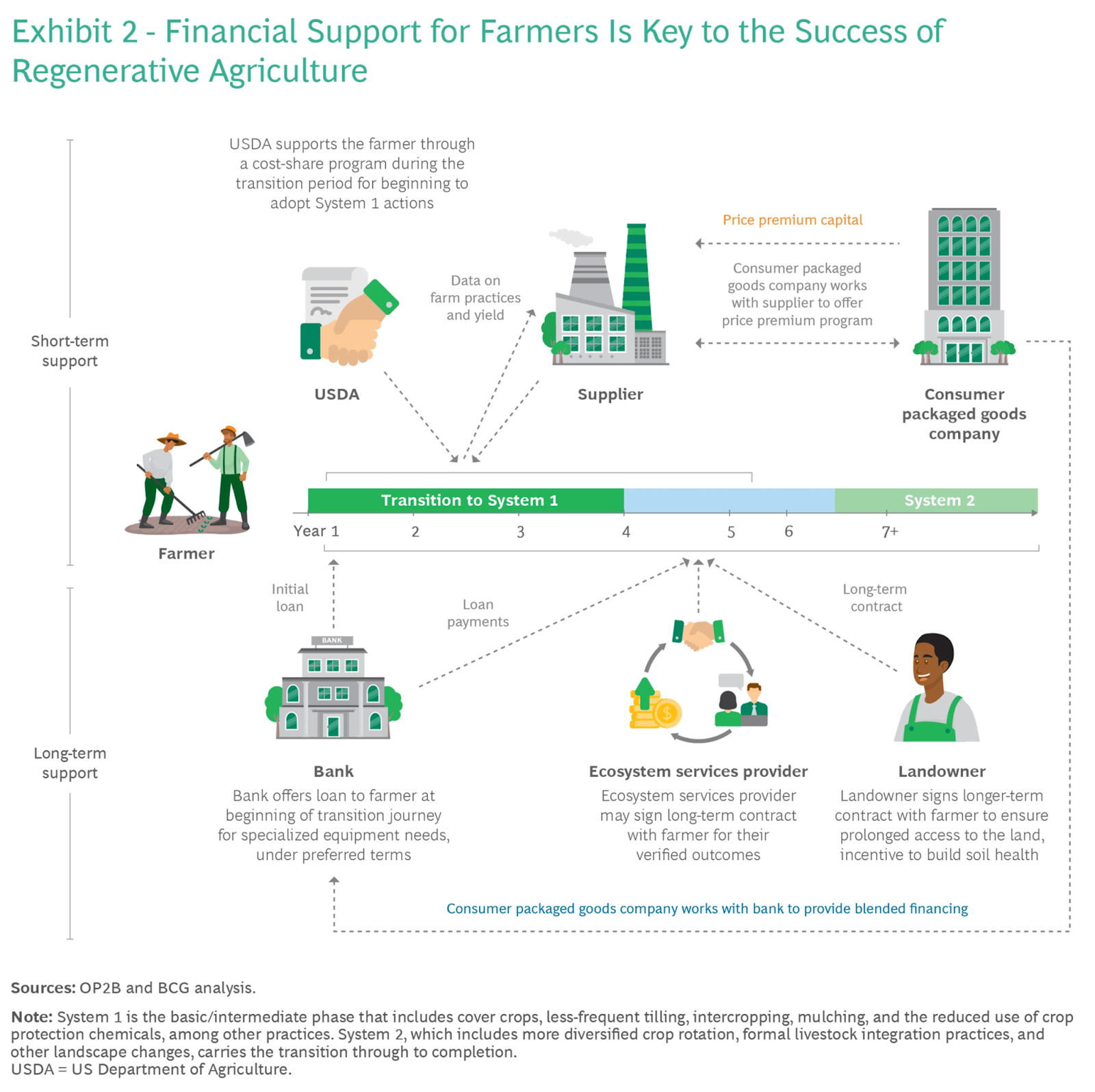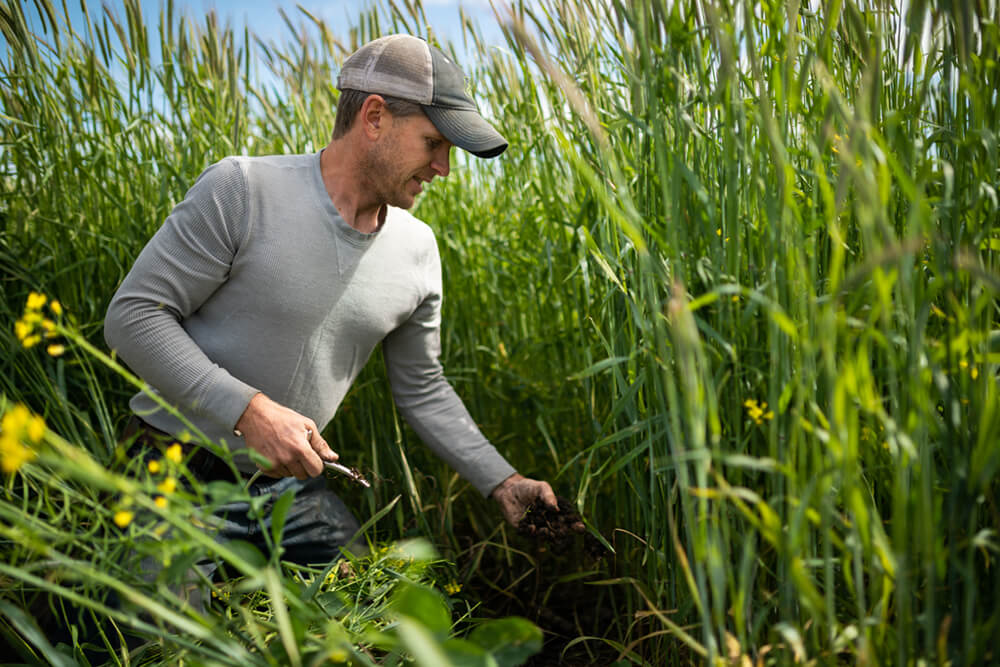According to research cited by Boston Consulting Group (BCG), farming contributes to more than one-fifth of the world’s greenhouse gas emissions. To lower those emissions, many farmers have switched to a regenerative agriculture model that aims to use less land and adopt eco-friendly practices such as adaptive grazing, no-till planting, and decreased use of pesticides and fertilizers.
The costs and risks involved are the main barriers to the broader adoption of regenerative agriculture. As BCG noted, the initial switch to regenerative farming can get expensive, and production could suffer during the transition. That’s a worrying scenario for farmers and ranchers who are already struggling to make ends meet.
Investors can play a big role in this way. An analysis from BCG found a potential return on investment of 15% to 25% for farmers once they have shifted from conventional agriculture to “incorporating more regenerative practices at scale.”

Photo Courtesy Boston Consulting Group
To help with initial costs, a growing number of impact investors who focus on climate and the environment are looking at regenerative agricultural practices as “investable, leading-edge solutions for decarbonizing the planet while providing needed food for the world’s 8 billion people,” Barron’s reported earlier this year.
Brad Harrison, co-head of impact at New York-based wealth management firm AlTi Tiedemann Global, told Barron’s that some deep-pocketed investors have moved away from putting money into renewable energy and are now investing in agricultural systems that improve soil health, ecosystems, and biodiversity. The right systems and practices “have the ability, if activated, to sequester — actually absorb — CO2 and methane from the atmosphere,” Harrison said.

Photo Courtesy AlTi Global
According to a report from Noble Research Institute, regenerative agriculture aims to “work with nature rather than against it. This type of farming is more than just being sustainable. It is about reversing degradation and building up the soil to make it healthier than its current state.”
Here are some of the common regenerative agriculture practices cited by Noble Research Institute:
- Planting no-till crops minimizes disturbances to the soil.
- Incorporating cover crops and other forage species into crops.
- Decreasing the use of fertilizers and pesticides.
- Using “adaptive grazing” — a process that involves moving cattle and other pastured animals through smaller sections of the land and allowing grazed land adequate rest and recovery.
These methods require commitment and money. A 2021 report from New Jersey-based advisory firm Pathstone found that access to capital is the “number one challenge facing the transition to regenerative agriculture.”
Farmers not only need money to buy land but also for planting and harvesting and purchasing equipment and technology to help them transition to regenerative farming.

Photo Courtesy Noble Research Institute
The good news is that impact investors have become enthusiastic about regenerative agriculture in recent years because “they want to show up in places where their capital can be catalytic,” Harrison told Barron’s. “If it weren’t for their investment, the investment wouldn’t occur.”
As Barron’s noted, regenerative agriculture investments have gotten a boost from the 2022 Inflation Reduction Act, a federal policy that sent more institutional money into renewable energy and sustainability projects. The next step is policy changes at the state and local levels to provide even more funding.
“Food and agriculture is shaped by a mix of federal, state, and local regulations, with many different streams of public funding,” according to Pathstone’s 2021 report.
Investors can also help by providing short-term loans to farmers to help them buy equipment or absorb losses early on in the transition stage to regenerative agriculture.

Photo Courtesy Boston Consulting Group
“Where it gets interesting in the private markets is when you’re investing directly into farms, essentially buying land,” Harrison told Barron’s. “That land that can be converted to regenerative agriculture practices — no-till, cover cropping, and soil dynamics, integrating livestock — all those principles of regenerative agriculture can be measured in pretty interesting ways when you focus on just the land, just owning the property, owning the asset, and then incentivizing the farmer to convert to regenerative [practices].”





